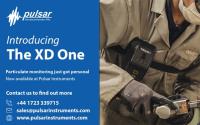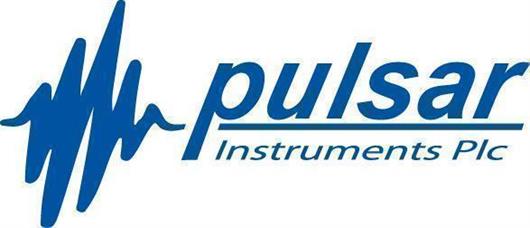 Add My Company
Add My Company
Sign In

At Pulsar Instruments, we are always looking for new innovations that enable you to protect your employees. Having manufactured noise and vibration monitoring devices for over 50 years, we have now expanded our range of products to include dust sampling.
Death and disease caused by harmful dust is the single biggest Health & Safety issue today. This is why Pulsar Instruments have decided to add Trolex’s latest personal dust monitoring innovation to our range of products.
Introducing the XD One, the new, wearable, self-contained personal dust monitoring device that saves time, money and lives. The XD One uses breakthrough technology to revolutionise personal particulate monitoring. The open-path sensor inside the device means that there is no need for filters, pumps or lab analysis meaning there is very little maintenance involved.
Due to the open-path sensor, the XD One is 5 times more accurate than other devices and delivers continuous, real-time detection of harmful particulates in even the harshest of conditions.
XD One Personal Dust Monitor
Wear it, fix it, move it!
XD One is personal, portable and mountable. It is a self-contained unit with no tubes, sampling heads, impactors, pumps, or filters. Weighing only 450g, this device has a 16+ hour battery life and offers a choice of mounting options, including walls, poles, cabs and on the body (option of chest mounting available for the Oronasal Sampling Zone.)
Almost zero maintenance
The automatic and on-demand self-test routine takes 5 seconds. The one-minute compliance test is required typically every 3-6 months. That’s it. No return-to-base servicing, complicated set-up, cleaning or calibration routines. PPE for the real world.
Accurate, flexible, reliable
0.35 – 40μm particle size range detection. Selectable density thresholds (mg/m3). Fully customisable STEL and TWA monitoring with associated alarms for PM1, PM2.5, PM4.25 and PM10. The unit is always recording full Total Suspended Particulates (TSP) data and stores up to 10 years for later analysis.
The dangers of dust
What work activities may create dust?
Many work activities can create dust. These include but are not limited to:
Weighing loose powders
Filling bags or emptying them into skips/containers
Cutting (e.g., paving stones)
Crushing and grading
Clearing up spillages
Who is most at risk?
Workers exposed to dusty environments, such as stonecutting and quarry work, are at a greater risk of developing respiratory illnesses, such as asthma and pneumonia, and visual disturbances, which can impact their quality of life.
Other workers at risk include those in the fire rescue services, where asbestos inhalation is a hazard, people working in catering roles where flour dust is airborne, and woodworkers who are exposed to fine wood dust particles, amongst many other roles.
What does the law say?
Dust is classed as a substance that is hazardous to health under the Control of Substances Hazardous to Health Regulations (COSHH) (2002).
The definition of a substance hazardous to health includes dust of any kind present at a concentration in air greater than 10mg/m3 (as a time-weighted average over 8-hours) of total inhalable dust. The limit for respirable dust is 4mg/m3 (as a time-weighted average over 8-hours).
The COSHH Regulations require employers to assess the risk to their employees and prevent or adequately control employees' exposure to these substances.
If you would like to find out more about how the XD One could save you time, money and the lives of your employee’s visit www.pulsarinstruments.com or call us on 01723 339715.
For more information on Particulate Monitoring Just Got Personal At Pulsar Instruments talk to Pulsar Instruments Plc
Enquire Now
List your company on FindTheNeedle.
